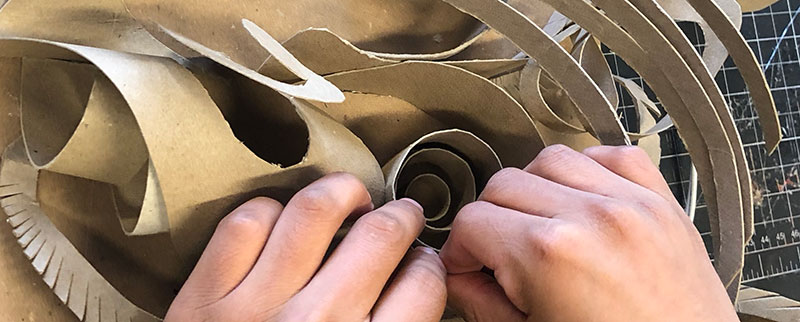By: Olivia Hunter
Buying art supplies for my classes at Parsons School of Design can be quite an ordeal. All art and design students have to endure many trips to the nearest art supply store for their classes; it’s just a part of life at an art school.

Whenever I take a trip to Blick, I’m usually pleasantly surprised at the low costs of the individual supplies I was told to get; it isn’t until I am at the cash register when it hits me how much I’m spending on simple art supplies.

At first, it may seem like a $1 pen and a $5 piece of illustration board isn’t much, but when your professor hands you a supply list with 30 or so items on it, the cost of the supplies add up quickly!

Many art students don’t realize that brand new supplies aren’t absolutely necessary to create beautiful works of art. You can recycle materials, be selective and smart about purchases, which can lower the high cost of art supplies.
I can’t count how many times I’ve had to go to the art supply store two or even three times in a single week. Sometimes just for the most minor purchases: to get one sheet of illustration board, or a .005 Micron pen.

In my sculpture class, we often create paper prototypes to plan the construction of our projects. One of the main focuses of my classes at art school is how sustainability and design can go together to create environmentally conscious products.

For my final project in my sculpture class, ‘Space/Materiality’, I am creating a scaled down chair that interacts with a clay sculpture of a human figure. The project involves measuring with an architect’s ruler, two triangles, a metal ruler, and a compass.

The combination of all of these tools ensures that the proportions of the chair directly correlate with those of the figure. A large part of the process of creating the prototype for this project is trial and error, so wasting materials is inevitable.
These prototypes allow you to experiment with shape and form. The more materials you’re able to find laying around, the more experimentation you can do.

My professor recommended corrugated cardboard as well as leftover paper to create prototypes with, since you’re using recycled material.
Corrugated cardboard boxes can be found on the side of the road, especially in New York City, or in a recycling bin of a school building- which makes it very easily obtainable. Corrugated cardboard, is cheap or free, It’s easy to cut, you can score it, bend it, laminate it, and more!

Leftover materials can also be effective in so many projects. In my Integrative Studio class, we were required to purchase chipboard for our comic book covers. Eventually, we would cover the chipboard covers with textile, made specifically for book covers.

The appearance of the chipboard had no effect on the finished look of the book. During a class critique, one of my classmates revealed that they used the back of their Bristol paper pad to substitute for the chipboard. After hearing this, I realized how easy it is to substitute with materials that I probably already have!

Substituting materials doesn’t have to be just about avoiding a trip to the art store or compromising your project. You can accomplish the same creative goal with easily obtainable and cheaper materials if you’re smart about it.

Old fabrics, scraps of paper, and other materials can easily be cut up and put together to create part of a project that can look completely intentional. Think of this as another way to express your creativity at art school!


